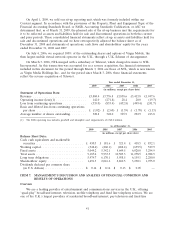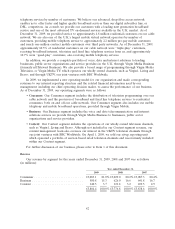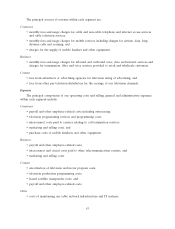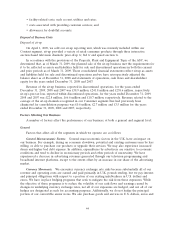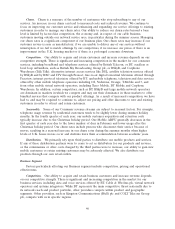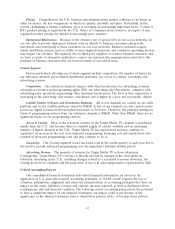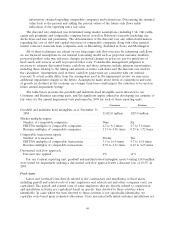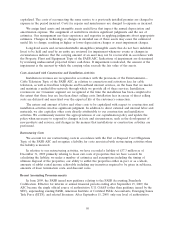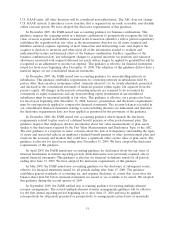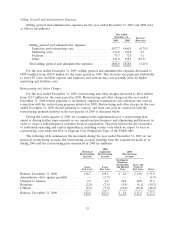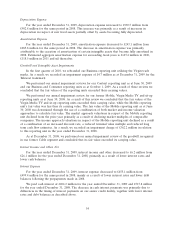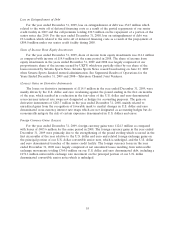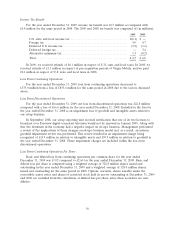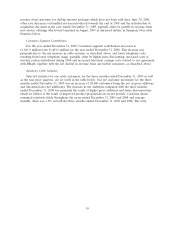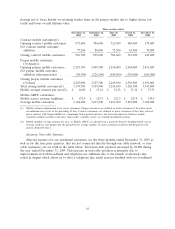Virgin Media 2009 Annual Report Download - page 53
Download and view the complete annual report
Please find page 53 of the 2009 Virgin Media annual report below. You can navigate through the pages in the report by either clicking on the pages listed below, or by using the keyword search tool below to find specific information within the annual report.U.S. GAAP exists. All other literature will be considered non-authoritative. The ASC does not change
U.S. GAAP; instead, it introduces a new structure that is organized in an easily accessible, user-friendly
online research system. We have adopted the disclosure requirements of this guidance.
In December 2007, the FASB issued new accounting guidance for business combinations. This
guidance requires the acquiring entity in a business combination to prospectively recognize the full fair
value of assets acquired and liabilities assumed in the transaction (whether a full or partial acquisition);
establishes the acquisition-date fair value as the measurement objective for all assets acquired and
liabilities assumed; requires expensing of most transaction and restructuring costs; and requires the
acquirer to disclose to investors and other users all of the information needed to evaluate and
understand the nature and financial effect of the business combination. Further, regardless of the
business combination date, any subsequent changes to acquired uncertain tax positions and valuation
allowances associated with acquired deferred tax assets will no longer be applied to goodwill but will be
recognized as an adjustment to income tax expense. This guidance is effective for financial statements
issued for fiscal years beginning after December 15, 2008. The adoption of this guidance did not have a
material impact on our consolidated financial statements.
In December 2007, the FASB issued new accounting guidance for noncontrolling interests in
subsidiaries. This guidance establishes requirements for ownership interests in subsidiaries held by
parties other than ourselves (sometimes called ‘‘minority interests’’) to be clearly identified, presented,
and disclosed in the consolidated statement of financial position within equity, but separate from the
parent’s equity. All changes in the parent’s ownership interests are required to be accounted for
consistently as equity transactions and any noncontrolling equity investments in unconsolidated
subsidiaries must be measured initially at fair value. This guidance is effective, on a prospective basis,
for fiscal years beginning after December 15, 2008; however, presentation and disclosure requirements
must be retrospectively applied to comparative financial statements. The account balances recorded in
our consolidated financial statements relating to noncontrolling interests are immaterial and therefore,
the disclosure requirements have not been applied as permitted by the provisions of the guidance.
In December 2008, the FASB issued new accounting guidance which expands the disclosure
requirements related to plan assets of a defined benefit pension or other postretirement plan. The
guidance requires that employers disclose information about fair value measurements of plan assets
similar to the disclosures required by the Fair Value Measurements and Disclosures Topic of the ASC.
The new guidance is a response to users’ concerns about the lack of transparency surrounding the types
of assets and associated risks in an employer’s defined benefit pension or other postretirement plan and
events in the economy and markets that could have a significant effect on the value of plan assets. The
guidance is effective for fiscal years ending after December 15, 2009. We have adopted the disclosure
requirements of this guidance.
In April 2009, the FASB issued new accounting guidance for disclosures about the fair value of
financial instruments in interim reporting periods. Such disclosures were previously required only in
annual financial statements. This guidance is effective for financial statements issued for all periods
ending after June 15, 2009. We have adopted the disclosure requirements of this guidance.
In May 2009, the FASB issued new accounting guidance for the disclosure of subsequent events,
effective for financial statements issued for all periods ending after June 15, 2009. The guidance
establishes general standards of accounting for, and requires disclosure of, events that occur after the
balance sheet date but before financial statements are issued or are available to be issued. We adopted
this guidance during the second quarter of 2009.
In September 2009, the FASB ratified new accounting guidance for existing multiple-element
revenue arrangements. The revised multiple-element revenue arrangements guidance will be effective
for the first annual reporting period beginning on or after June 15, 2010 and may be applied
retrospectively for all periods presented or prospectively to arrangements entered into or materially
51


